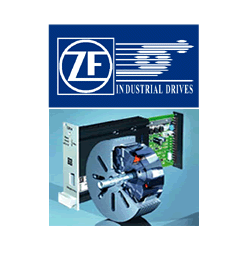ZF
JR Power have recently been appointed distributors for the ZF range of industrial drives and clutches. Below is a brief introduction to their range. ZF Hysteresis components are brakes, clutches and ERM electronic control units.
ZF Tiratron
The combination of the brake with the electronic control unit or the clutch with the electronic control unit, facilitates the exact regulation of tension forces as well as a defined setting of a torque.
Exemplary operation
The ZF hysteresis technology can be used and applied wherever products, such as paper, wire etc., are processed by wrapping. Loads can be simulated with Tiratron on test benches or in ergometers.
Non-contact torque transmission
The non-contact mechanical component transmits the torque constantly and free of any wear.
Operating principles
The operating principles of hysteresis brakes and clutches are based on the magnetic force effect of attracting poles in synchronous mode and on continuous magnetic reversal in slip mode.
Slip power
During continuous slip mode, heat generation caused by slip power must also be taken into account.
Residual magnetism
Torque ripple occurs as a result of residual magnetism when the current is changed to below 50% of the initial value either abruptly or without turning the armature/rotor. A reliable way to avoid torque ripple is to reduce the current while simultaneously turning the armature and rotor resp. brake solenoid during approx. 1 turn (relative).

